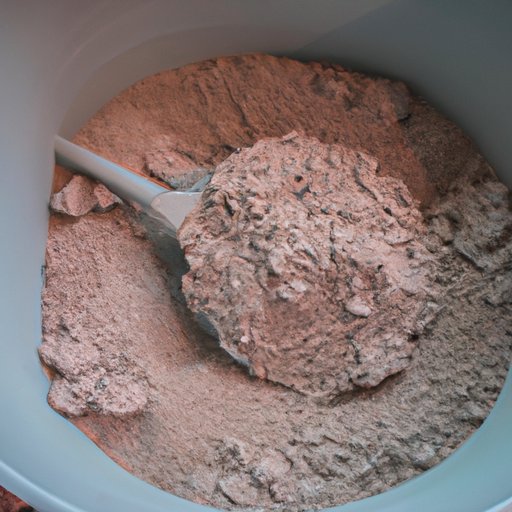
I. Introduction
If you’re a cat owner, you know that dealing with cat waste is a necessary part of pet ownership. But what do you do with that waste once you’ve scooped it up and removed it from the litter box? One question many cat owners have is whether or not it’s safe to flush cat litter down the toilet. Before you choose this method of disposal, it’s important to understand both the pros and cons of flushing cat litter.
II. The Truth About Flushing Cat Litter: What You Need to Know
Flushing cat litter may seem like an easy solution to the problem of cat waste disposal. After all, simply flushing it down the toilet eliminates the need for a smelly trash can and the potential for odors to escape into your home. However, there are some potential risks and dangers associated with this method of disposal.
The biggest risk of flushing cat litter is the potential for clogging your plumbing. If the litter doesn’t break down properly, it can create clumps that clog your pipes. This can cause a backup in your plumbing and lead to costly repairs.
In addition, flushing cat litter can also spread disease. Cat waste contains pathogens that can be harmful to humans, and flushing the litter can spread these pathogens through your plumbing system and into the water supply.
III. Flushable Cat Litter: Is It Really Safe for Your Plumbing?
In response to concerns about clogged pipes, many types of cat litter are now marketed as “flushable.” These litters are designed to break down in water and pass safely through your plumbing system. However, not all flushable cat litters are created equal.
Some flushable cat litters are made from natural materials, such as corn or wheat, and are designed to break down quickly in water. Others are made from clay or other materials that may not break down as easily, and can still pose a risk of clogging your pipes.
Before you choose a flushable cat litter, it’s important to do your research and choose a product that is designed to be safe for your plumbing system. Look for litters that have been tested and approved for flushing, and follow the manufacturer’s instructions carefully.
IV. Eco-Friendly Cat Litter Disposal: The Pros and Cons of Flushing
Flushing cat litter can be an eco-friendly solution to the problem of litter disposal. By flushing the waste, you eliminate the need for plastic bags and other disposal methods that can harm the environment. However, there are other eco-friendly options to consider as well.
One popular alternative to flushing cat litter is composting. Cat waste can be added to a compost pile along with other organic material, such as food scraps and yard waste. This creates a nutrient-rich soil amendment that can be used in gardens and landscaping.
Another option is to dispose of cat waste as trash. While this may not be as eco-friendly as composting or flushing, it is still a safe and responsible way to dispose of cat waste.
V. Why You Should Never Flush Cat Litter Down the Toilet
While flushing cat litter may seem like a simple and convenient solution, it is not recommended by most plumbing and waste management experts.
One of the biggest reasons why you should avoid flushing cat litter is because of the potential for clogged pipes. Even if you use a flushable litter, there is still a risk of the litter clumping together and creating a blockage in your plumbing.
In addition, flushing cat litter can also have negative environmental consequences. The litter can contain harmful pollutants and toxins that can be harmful to aquatic life and the environment in general.
VI. The Dos and Don’ts of Flushing Cat Litter
If you do decide to flush your cat’s litter, it’s important to do it safely and responsibly. Here are some dos and don’ts to keep in mind:
- Do use a flushable litter that is designed to break down in water and is safe for your plumbing system.
- Do follow the manufacturer’s instructions carefully.
- Do use a dedicated toilet for flushing cat litter, and do not flush litter in toilets that are connected to a septic system.
- Do flush small amounts of litter at a time, and avoid flushing large amounts at once.
- Don’t flush litter made from clay or other materials that are not designed to break down in water.
- Don’t flush litter that has been soiled with urine or feces, as this can spread disease.
- Don’t flush litter in areas with water conservation regulations, as flushing cat litter can use a significant amount of water.
VII. Conclusion
When it comes to flushing cat litter, there are pros and cons to consider. While it may seem like a convenient solution to the problem of cat waste disposal, it can also pose risks to your plumbing and the environment. If you do decide to flush your cat’s litter, make sure to choose a flushable litter that is safe for your plumbing system, and follow the manufacturer’s instructions carefully.
Overall, it may be safer and more eco-friendly to consider alternative methods of cat waste disposal, such as composting or disposing of waste as trash. By taking a responsible approach to cat waste disposal, you can ensure the health and safety of your home, your plumbing, and the environment.





